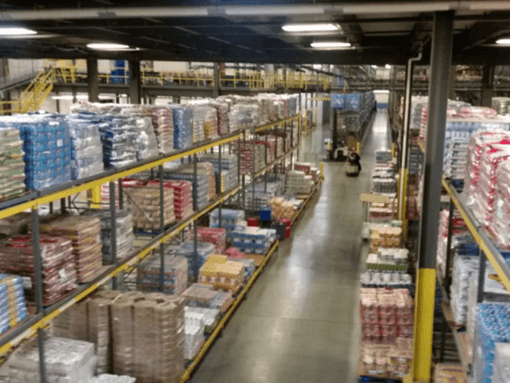Have you noticed a decrease in warehouse productivity?
If so, the experts at Hy-Tek Material Handling, LLC. offer these great tips to help get you back on track for increased efficiency in your facility.
- Specific job descriptions using SOPs
- Standard Operating Procedures (SOPs) are critical elements of a warehouse operation. SOPs provide detailed guidance to associates about how specific job functions should be performed safely and efficiently to gain warehouse productivity.
- SOPs should be maintained and updated as processes change.
- Formal training programs by job function
- Formalized training programs should be developed for each job function in the warehouse to ensure work is performed accurately and consistently.
- Part of the training program should include a sign-off process where a supervisor verifies the associate actively demonstrates an understanding of the SOPs and training.
- Ongoing Coaching/Counseling process to encourage management involvement and receive employee feedback (Idea box, and good ideas get recognized)
- The coaching facilitates and promotes interaction between associates and management and fosters teamwork.
- Employee feedback allows the associates to have a voice in the warehouse. It will enable associates to influence change in the warehouse with firsthand experience and take ownership of how the warehouse performs.
- Daily KPI & other key metrics reporting
- Allows associates to see and understand how their increased performance increases warehouse productivity.
- Associates can better visualize the short and long-term objectives of the warehouse.
- Managers can better plan staffing needs with well-established KPIs and associate them with cost.
- Regular (monthly or quarterly) systems functionality review meetings & systems redesign as needed
- Ensure the warehouse support systems improve the functionality rather than hinder or limit warehouse productivity.
- Systems occasionally need to be reviewed to prepare for upcoming process changes to be supported systemically.
- System redesigns should be supported at all levels of organizational change.
- Lean/Six Sigma philosophy & culture = Gemba walks/5S boards/Kaizen events, etc.
- Continuous improvements are vital to running a successful warehouse.
- Gemba walks allow employees to assess the process flow and identify areas of waste or opportunity.
- 5S promotes work area organization and cleanliness. An example would be 5S shadow boards which promote proper tool/supply storage.
- Kaizen events encourage collaboration between management and associates to define the current state and align the details of the process improvements. The improvements are re-assessed and refined.
- Engineered Labor Standards that include an incentive or recognition program and a periodic maintenance plan
- Labor standards promote employee productivity.
- It clearly defines the amount of work of a specified quality when following the documented SOP or a preferred methodology that an associate must perform in an acceptable amount of time.
- Incentive programs increase the effectiveness of engineered labor standards (typically by 10-20%) and encourage associates to perform above and beyond expected levels by either providing additional wages or through company perks.
- Slotting program
- Proper slotting increases the utilization of storage
- Improves outbound throughput by reducing travel
- Increases warehouse safety and promotes better palletization
- Layout enhancement & MHE review (annual at minimum)
- An optimized layout improves the outbound throughput
- Regularly assess the material handling equipment (MHE) to ensure optimal utilization.
- Routinely assess potential new MHE technology alternatives to improve warehouse operations.
- Preventative maintenance is key to reducing downtime.
- Annual review of business growth plans & future objectives
- Ensure labor forecasts align with business growth plans and objectives, so the current MHE throughputs do not become a limiting factor or bottleneck.
- The review of business growth plans also allows the opportunity to assess the warehouse capacities (both storage and processing throughputs) to align with the expected lifespan of the warehouse.
- Safety
- Proper signage and training the associates of safety measures will promote a safe and productive work environment and minimize accidents.
- Dedicated pedestrian walkways promote safety around MHE lifts.
- Accurate inventory maintenance
- Routine cycle counts and accurate data entry by warehouse team members are required to maintain accurate inventory.
- Accurate inventory ensures proper order fulfillment and overall warehouse associate and customer experience.
What Does SOP Stand for?
SOP stands for Standard Operating Procedure.
In a warehouse setting, a Standard Operating Procedure provides detailed guidance to associates on the floor about how the work should be performed safely and efficiently to utilize the workforce best.
What is a Gemba Walk?
A Gemba walk is the act of witnessing a process firsthand on the front lines to learn, find problems, and discover opportunities for improvement.
What Does 5S Stand for?
5S stands for the 5 steps of Lean Manufacturing Methodology: Sort, Set in Order, Shine, Standardize, Sustain.






